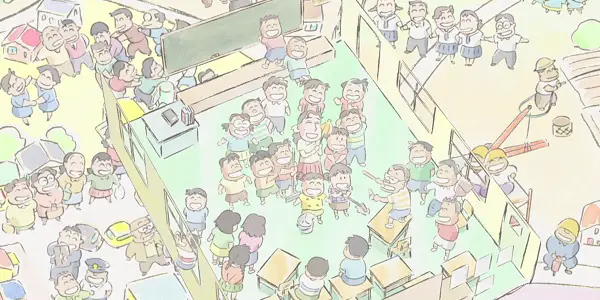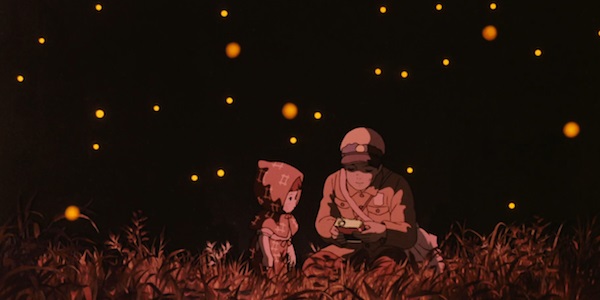The Stature and Vision of Isao Takahata, 1935-2018

Ben is a former student of cognitive science who is…
On April 5, 2018, Isao Takahata passed away. He was, in many respects, a very unusual filmmaker. He didn’t draw, and yet stood at the helm of some of the most innovative and intricate works of animation ever made. He was notoriously inefficient with both time and money but consistently had the support from some exceptional collaborators throughout his career.
Plenty has been written about Takahata in the wake of his death, ranging from brief descriptions of his popular works (and, frequently, noting his differences from his friend Hayao Miyazaki) to production histories regarding his whole career. The latter is invaluable: understanding the life of a world-historic talent bears on our understanding of what goes into the creation of art. But for basic film criticism, it’s hard to know what to say about someone like Takahata: his films are intelligible and fascinating whether you know about his life or not.
The Outpouring of Vision
When one considers all of Isao Takahata‘s films together, their commonalities aren’t what stand out. The aimless, dreamlike comedy of Panda Kopanda, his second film (actually a pair of short films) stands on one end of his filmography; on the other end stands Grave of the Fireflies, which is known for being sad and brutally realistic. His other films cover the spectrum between these modes of expression, and no matter where you look along that spectrum, you can find a great film.

Formal brilliance, at least, is a constant in his films, no matter which modus operandi any of them adopts. In his 1999 slice-of-life comedy My Neighbors the Yamadas, there are scenes where the stillness of a character acts as part of a joke; others wherein stillness establishes a more serious tone. The film’s art style is hazy and sketchy, with rough outlines that undulate with every movement; this style is part of the reason stillness is so pronounced, and so effective. Films like Horus: Prince of the Sun and Gauche the Cellist use entirely different art styles, but they contain sequences with similar subtlety of animation (especially character animation). And, consequently, they achieve similar intuitive strength.
This was possible not just because he was a brilliant artist, but because he was a brilliant artist who was exactly where he needed to be. He was able to work through his visions with other great artists and creative apparatuses capable of bending to the complicated needs of his work. The forces that gave rise to his incredible career lay both in his receptiveness to the world and the section of the world he occupied.
Nature and Intuition
An excellent demonstration of “receptiveness to the world” is in a sequence from Isao Takahata‘s 1991 film Only Yesterday, when the film (primarily a domestic comedy) briefly turns into a documentary about the harvesting of safflowers and the production of rouge. The idea that this would be interesting – and it is indeed a lovely sequence, even if you don’t happen to care about safflowers – is key to the path that film’s main character takes: understanding and participating in a different culture and way of living. A similar sentiment is rendered in very different ways throughout Takahata‘s 1979 TV adaptation of Anne of Green Gables.

By itself this would be naive, but we must remember that Takahata‘s most famous film, Grave of the Fireflies, is unforgettable as a picture of worldly devastation. And as much as Only Yesterday expresses love for the countryside, it doesn’t depict it in an especially stylized manner, opting instead for a very rigorous realism; meanwhile, his work that goes furthest in exaggerating the world’s richness, The Tale of the Princess Kaguya, is easily his most heartrending work after Grave of the Fireflies.
A crucial thing to understand about Only Yesterday is that its main character’s embrace of the setting is as much about her as it is about the setting itself. She finds a place where she can thrive on the work, the climate, the history, and the relationships she can develop. Her curiosity and intuitions led her to a place that suited her unique needs and preferences. The world may not be strictly good, but in Only Yesterday, taking an interest in new bits of the world contributes to its improvement.
The Shoulders of Giants
With the loss of an artist like Isao Takahata, we hope their influence will be felt for a long time coming, that future artists will build on what they introduced. Many already have. I hope people will not only draw on his contributions, but understand how rare it is for such a broad scope of vision to be so fully realized. We will remember what happens when a great artist occupies a special place in history.
What are your thoughts on Isao Takahata?
Does content like this matter to you?
Become a Member and support film journalism. Unlock access to all of Film Inquiry`s great articles. Join a community of like-minded readers who are passionate about cinema - get access to our private members Network, give back to independent filmmakers, and more.
Ben is a former student of cognitive science who is currently trying to improve his writing style and ability to understand and appreciate films containing unfamiliar perspectives. He tries not to hold films to a strict set of criteria, but does believe that strong movies can change your outlook on the world. His favorite films include Whisper of the Heart, Hellzapoppin', Foolish Wives, 42nd Street, and the work of Charlie Chaplin.













